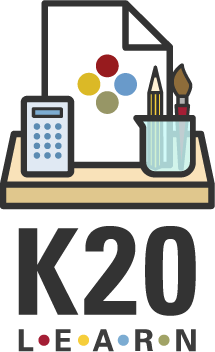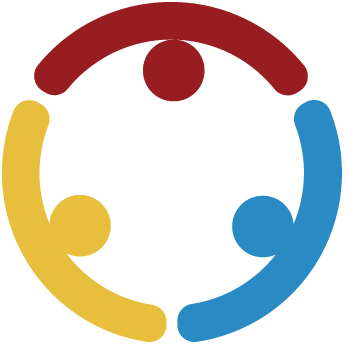Summary
Participants in this professional learning session explore a coaching model that involves cycles of joint planning, action and practice, observation, reflection, and feedback. Coaching is key to improving teachers' instruction and translating knowledge into practice, so instructional coaches should have a primary goal of helping teachers grow and increasing their effectiveness. Participants will learn how to set clear goals, reflect on the coaching cycle through annotated research, and devise actionable steps to ensure successful coaching implementation.
Essential Question
How can instructional coaches leverage the coaching cycle to transform teacher practice, foster continuous student growth, and improve student achievement?
Snapshot
Engage
Participants discuss their coaching philosophy in small groups.
Explore
Participants explore the different parts of the coaching cycle during a Card Sort.
Explain
Participants read, annotate, and discuss a research brief about instructional coaching and the coaching cycle.
Extend
Participants write an initial goal and revise the goal using the SMART Goal method.
Evaluate
Participants develop a plan for their coaching in order to meet their SMART Goal.
Materials List
Presentation Slides (attached)
Coaching Cycle Card Sort handout (attached; one set per group of three)
Instructional Coaching Research Brief handout (attached; one per participant)
Unlocking Success handout (attached; one per participant)
SMART Goal handout (attached; one per participant)
Coaching Planning Guide handout (attached; one per participant)
Sentence Stems handout (attached; one per participant)
Instructional Strategy Note Catcher handout (attached; one per participant)
Highlighters
Learning Goals
Identify and apply a coaching model that includes joint planning, practice, observation, reflection, and feedback to improve classroom instruction.
Reflect on research in instructional coaching to identify strategies to support teachers’ professional growth.
Create a SMART goal that outlines a clear plan for initiating and implementing a coaching cycle with a teacher.
Preparation
Prior to the session, create a Mentimeter using the steps below.
Select “New presentation.”
Title your presentation and select “Create presentation.”
Add the questions from slide 3 to the Mentimeter.
Select “Flowing Grid” as the response view.
Insert the link to the Mentimeter into the presentation on slide 3. Provide your custom code to connect participants with the questions.
Cut out one set of the Coaching Cycle Card Sort cards per each pair or small group. Use a paperclip, envelope, or zip top bag to keep each set together until they are used in the Explore phase of the session. Consider printing the cards on card stock for easier reuse.
Engage
10 Minute(s)
Use the attached Presentation Slides to facilitate the session. Display slide 2 and introduce the topic of the session.
Transition to slide 3 and request that participants access the Mentimeter by navigating to menti.com, scanning the QR code, or using the code on the slide. Ask participants to respond to the following prompt in Mentimeter: “What phrase would you use to describe your coaching philosophy?”
Allow participants a few minutes to respond to the question. Share participant responses and facilitate a group discussion. Consider asking discussion questions such as, “Which phrases do you agree with?” or “Which phrases are you curious about?”
After discussing, transition through slides 4–5 and introduce the essential question and learning objectives.
Explore
15 Minute(s)
Ask participants to form groups of two or three and pass out one set of the prepared Coaching Cycle Card Sort sets to each group. Display slide 6 and introduce the instructions for the Card Sort. Explain that participants should sort the cards into the three stages of the cycle: Goal Setting, Observation, and Reflection. Point out to participants that these three cards are shaded gray in the Coaching Cycle Card Sort Set and serve as the sorting categories. Allow participants time to work. As they work, walk around the the room to offer assistance and answer questions as needed.
Once it appears that most groups have organized their cards, facilitate a group discussion. Encourage each group to share how they organized their cards and to justify their reasoning. Then, use slides 7–9 to reveal the correct order of steps in the coaching cycle.
Explain
20 Minute(s)
Move to slide 10. Organize participants into groups of three and pass out one copy of the attached Instructional Coaching Research Brief and one highlighter to each participant.
Introduce participants to both the Jigsaw and Why-Lighting instructional strategies. Tell participants that every person in their group should read the introduction. Then, divide the goal-setting, observation, and reflection sections among the group so that each person reads one section. As they read, have participants use their highlighters to Why-Light their assigned section. Have them highlight at least three interesting points in their section and make a note next to each in the margins explaining why that point is important.
After all participants have read their section, have them share what they learned from the reading with their group members. Allow time for small group discussions, then elaborate on the importance of the coaching cycle steps when instructional coaches assist teachers with creating personal goals, provide targeted feedback from observations, and aid in teacher self-reflection.
Distribute copies of the Unlocking Success handout, which participants can use as a resource for each phase of the cycle.
Extend
20 Minute(s)
Display slide 11 and give each participant one copy of the attached SMART Goal handout. Invite participants to write an initial goal at the top of the handout describing how they want to initiate and implement a coaching cycle with a teacher in mind.
Move to slide 12 and share an example of a SMART Goal. As you share, highlight each of the different components of the SMART Goal as they appear.
Ask participants to then complete the remaining sections of the handout, each related to a component of a SMART Goal, to further outline how they will achieve their goal of implementing a coaching cycle with a teacher. Have them respond to the following prompting questions in the handout:
Specific: What is your desired result? (Think about elements of who, what, when, why, how.)
Measurable: How can you measure progress? How often will you assess progress?
Attainable: What skills do you need? What resources are necessary? Why are you motivated to do this?
Realistic and Relevant: How do you know your goal is achievable? What are your likely obstacles?
Time-bound: What is your deadline? Is your deadline realistic?
Allow participants time to complete their handouts, then have them use their handouts to revise their initial goals.
Evaluate
20 Minute(s)
Move to slide 13 and distribute the attached Coaching Planning Guide and Sentence Stems handouts to participants. Explain to participants that they should answer the questions individually, but they should pause and discuss their responses with a partner when directed to do so in the handout. Once all participants have completed their handouts, facilitate a group discussion about key takeaways and answer any lingering questions.
Display slide 14 and give each participant one copy of the attached Instructional Strategy Note Catcher handout. Invite participants to fill in the first column of the handout by reflecting on the instructional strategies from the session, then ask them to complete the second column of the handout with ideas of how they could incorporate these strategies into their work with teachers.
If time permits, invite participants to share their ideas about how they could use the instructional strategies with their teachers.
Follow-Up Activities
Explore other coaching resources in the collection Unlocking Success: Guides to Effective Instructional Coaching.
Research Rationale
Research indicates that coaching has the largest and most immediate impact on developing teachers (Walsh et al., 2020). Coaching benefits extend to experienced teachers as well, increasing their likelihood of adopting new, research-based strategies (Walsh et al., 2020). Studies also show that coaching supports student learning, particularly through practices that promote deep conceptual understanding and active involvement in knowledge construction (Witherspoon et al., 2021). Coaching work leads to significant gains in student achievement (Knight & Skrtic, 2021).
Resources
Bright Morning Team. (n.d.). Coaching sentence stems. Bright Morning. https://content.app-us1.com/ZzEmW/2025/02/20/ef00a240-7453-43ae-b335-4effcb8b7041.pdf
Knight, D. S., & Skrtic, T. M. (2021). Cost-effectiveness of instructional coaching: Implementing a design-based, continuous improvement model to advance teacher professional development. Journal of School Leadership, 31(4), 318–342. https://doi.org/10.1177/1052684620972048
K20 Center. (n.d.). Card sort. Strategies. https://learn.k20center.ou.edu/strategy/147
K20 Center. (n.d.). Jigsaw. Strategies. https://learn.k20center.ou.edu/strategy/179
K20 Center. (n.d.). Mentimeter. Tech Tools. https://learn.k20center.ou.edu/tech-tool/645
K20 Center. (n.d.). SMART goals. Strategies. https://learn.k20center.ou.edu/strategy/4250
K20 Center. (n.d.). Why-lighting. Strategies. https://learn.k20center.ou.edu/strategy/128
K20 Center. (n.d.). Unlocking success: Guides to effective instructional coaching. Collections. https://learn.k20center.ou.edu/collection/4310
Walsh, N. R., Ginger, K., & Akhavan, N. (2020). Benefits of instructional coaching for teacher efficacy: A mixed methods study with preK-6 teachers in California. Issues in Educational Research, 30(1), 1143–1161.
Witherspoon, E. B., Ferrer, N. B., Correnti, R. R., Stein, M., Schunn, C. D. (2021). Coaching that supports teachers’ learning to enact ambitious instruction. Instructional Science, 49, 877–898.


